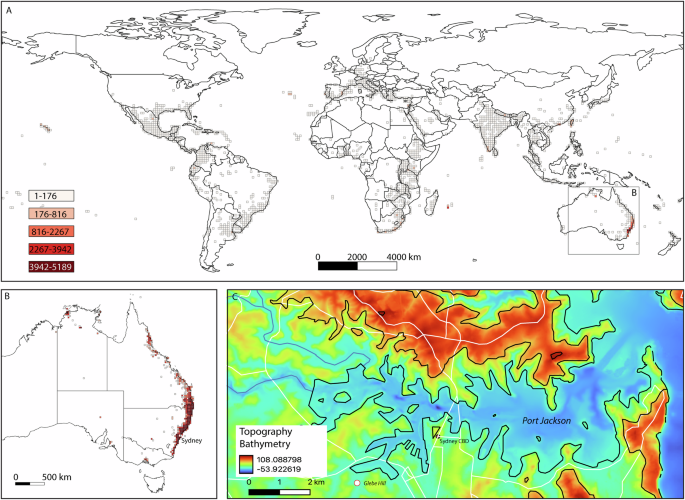Research Report: Climate Change Impacts on Marmota baibacina Distribution and Implications for Sustainable Development Goals
1.0 Introduction and Context
A study was conducted to analyze the impact of global climate change and human activities on the distribution of Marmota baibacina, a keystone species in Central Asia’s high-altitude ecosystems. The species presents a complex challenge for sustainable development, as its activities contribute to vegetation degradation and soil erosion while also posing a significant public health threat as the primary reservoir for Yersinia pestis (plague). This research directly addresses the interconnected challenges of environmental management and public health, aligning with key United Nations Sustainable Development Goals (SDGs).
- SDG 15 (Life on Land): The study focuses on a keystone species whose habitat is threatened, impacting the health and integrity of alpine ecosystems.
- SDG 3 (Good Health and Well-being): The research addresses the risk of zoonotic disease transmission, a critical component of ensuring healthy lives and promoting well-being for all.
2.0 Methodology
The study employed an integrated modeling approach to predict the current and future distribution of Marmota baibacina. The methodology involved the following components:
- Data Collection: 111 species occurrence records were utilized alongside 29 environmental variables covering climatic, topographic, edaphic, and vegetation factors.
- Predictive Models: Five machine learning models (XGBoost, RF, SVM, LogBoost) and the MaxEnt model were integrated to enhance predictive accuracy.
- Timeframes and Scenarios:
- Current Period: 1970–2000
- Future Period: 2041–2100
- Climate Scenarios: Three Shared Socioeconomic Pathways (SSPs) were analyzed to model future conditions: SSP126 (sustainability), SSP370 (middle of the road), and SSP585 (fossil-fueled development). This aligns with SDG 13 (Climate Action) by assessing the potential impacts of different climate futures.
3.0 Key Findings
3.1 Model Performance and Environmental Drivers
- All five models demonstrated high predictive accuracy, with Area Under the Curve (AUC) values exceeding 0.9.
- Machine learning models identified 10 key environmental variables, with the following four contributing over 70% to the predictions:
- Bio18 (Precipitation of Warmest Quarter)
- Bio2 (Mean Diurnal Range)
- Bio11 (Mean Temperature of Coldest Quarter)
- Bio15 (Precipitation Seasonality)
- The MaxEnt model prioritized slope, NDVI, and Bio18 as the dominant drivers.
3.2 Current and Future Habitat Distribution
- Current Distribution: Under current climatic conditions, the potential suitable habitat for Marmota baibacina is primarily concentrated in the central Tianshan Mountains of Xinjiang. The total suitable area is estimated to be between 2.75 × 10⁴ km² and 13.59 × 10⁴ km².
- Future Projections: A general decreasing trend in suitable habitat area is projected across all future scenarios. Habitat contraction is expected to be most severe in the southern Tianshan Mountains under the high-emissions SSP585 scenario.
4.0 Implications for Sustainable Development Goals (SDGs)
The projected shifts in Marmota baibacina distribution have significant consequences for achieving the SDGs in the region.
- SDG 15 (Life on Land): Habitat contraction may intensify competition for resources between marmots and livestock, accelerating the degradation of alpine meadows and threatening ecosystem stability. This highlights the urgent need for conservation strategies that protect terrestrial ecosystems and halt biodiversity loss.
- SDG 3 (Good Health and Well-being): The aggregation of marmot populations into smaller, more concentrated habitats elevates the risk of zoonotic plague transmission. This poses a direct threat to the health of local pastoral communities, undermining efforts to ensure public health security.
- SDG 13 (Climate Action): The findings provide critical evidence of how climate change directly alters species distribution, which can destabilize ecosystems and create new public health risks. This underscores the necessity of taking urgent action to combat climate change and its impacts.
5.0 Conclusion and Recommendations
This study provides critical insights for developing integrated strategies that balance alpine ecosystem conservation with public health protection. The projected habitat loss for Marmota baibacina necessitates proactive management to mitigate negative ecological and health outcomes. The research offers actionable guidance for policymakers to safeguard ecological security and public health in Xinjiang’s pastoral regions, contributing directly to the achievement of SDGs 3, 13, and 15.
1. Which SDGs are addressed or connected to the issues highlighted in the article?
SDG 3: Good Health and Well-being
- The article directly connects the species Marmota baibacina to public health by identifying it as the “primary reservoir of Yersinia pestis,” the bacterium that causes plague. It highlights the risk of disease transmission, stating that population shifts “elevate zoonotic plague transmission risks,” which is a significant public health concern.
SDG 13: Climate Action
- The core of the study is to understand the impact of “global climate change” on the species’ habitat. It uses future climate scenarios (SSP126, SSP370, SSP585) to project changes, directly addressing the need to understand and adapt to climate-related hazards.
SDG 15: Life on Land
- The article focuses on a “keystone species” within an “alpine ecosystem.” It discusses issues central to this goal, including “vegetation degradation,” “soil erosion,” “alpine meadow degradation,” and the “contraction” of suitable habitats. The study aims to provide insights for “balancing alpine ecosystem conservation” and “safeguarding ecological security.”
2. What specific targets under those SDGs can be identified based on the article’s content?
Targets under SDG 3: Good Health and Well-being
- Target 3.3: “By 2030, end the epidemics of AIDS, tuberculosis, malaria and neglected tropical diseases and combat hepatitis, water-borne diseases and other communicable diseases.” The article’s focus on the plague, a zoonotic and communicable disease, and the risk of its transmission directly relates to this target of combating communicable diseases.
Targets under SDG 13: Climate Action
- Target 13.1: “Strengthen resilience and adaptive capacity to climate-related hazards and natural disasters in all countries.” The study models the effects of climate change on species distribution to provide “actionable guidance” for managing ecological and health risks, which is fundamental to building resilience and adaptive capacity.
Targets under SDG 15: Life on Land
- Target 15.1: “By 2020, ensure the conservation, restoration and sustainable use of terrestrial and inland freshwater ecosystems and their services, in particular forests, wetlands, mountains and drylands…” The research is centered on the “Tianshan Mountains,” an alpine ecosystem, and provides insights for its conservation.
- Target 15.3: “By 2030, combat desertification, restore degraded land and soil…” The article explicitly mentions that the marmot’s activities exacerbate “vegetation degradation and soil erosion” and contribute to “alpine meadow degradation,” issues directly addressed by this target.
- Target 15.5: “Take urgent and significant action to reduce the degradation of natural habitats, halt the loss of biodiversity…” The study’s finding that the marmot’s “suitable habitat area” is projected to decrease and contract is a direct analysis of natural habitat degradation and its impact on a keystone species.
3. Are there any indicators mentioned or implied in the article that can be used to measure progress towards the identified targets?
Indicators for SDG 3
- Implied Indicator for Target 3.3: The article implies the “risk of zoonotic plague transmission” as a key concern. Progress could be measured by monitoring and reporting the incidence of plague in human and animal populations in the identified high-risk areas.
Indicators for SDG 13
- Indicator for Target 13.1: The “total suitable habitat area” (measured in km²) for Marmota baibacina under different climate scenarios is a direct, quantifiable indicator used in the study. The projected “decreasing trend in suitable habitat area” serves as a metric to assess climate-related hazards on the ecosystem.
Indicators for SDG 15
- Indicator for Target 15.3 & 15.5: The article uses “NDVI” (Normalized Difference Vegetation Index) as an environmental variable. NDVI is a widely used indicator to measure vegetation health and can be used to monitor “vegetation degradation” and “alpine meadow degradation.”
- Indicator for Target 15.5: The “distribution of Marmota baibacina” and the “total suitable habitat area” (e.g., “ranged from 2.75 × 10⁴ km² to 13.59 × 10⁴ km²”) are direct indicators of the status of a keystone species and its habitat, which is crucial for measuring biodiversity loss and habitat degradation.
4. Table of SDGs, Targets, and Indicators
| SDGs | Targets | Indicators |
|---|---|---|
| SDG 3: Good Health and Well-being | 3.3: End epidemics of communicable diseases. | Risk and incidence of zoonotic plague transmission. |
| SDG 13: Climate Action | 13.1: Strengthen resilience and adaptive capacity to climate-related hazards. | Change in total suitable habitat area (km²) for keystone species under different climate scenarios. |
| SDG 15: Life on Land | 15.1: Ensure the conservation and sustainable use of terrestrial ecosystems, especially mountains. | Geographic distribution and population density of keystone species (Marmota baibacina) in mountain ecosystems. |
| 15.3: Combat desertification and restore degraded land and soil. | NDVI (Normalized Difference Vegetation Index) to measure vegetation and meadow degradation. | |
| 15.5: Reduce the degradation of natural habitats and halt biodiversity loss. | Total suitable habitat area (km²) and rate of habitat contraction for keystone species. |
Source: frontiersin.org






